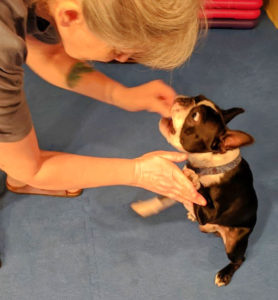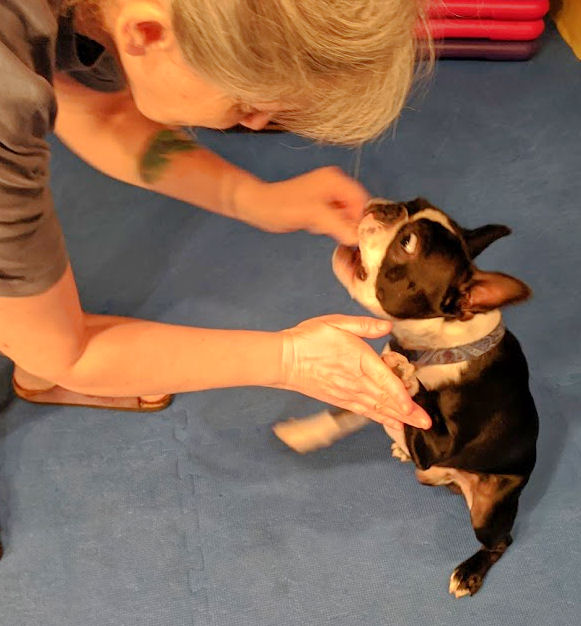It’s the question that gets asked on social media more than any other – “What training treats are you using?” The answer is simple: the best dog training treats are the ones your dog likes.
Of course dogs’ tastes range widely. There are treats the dog will eat, treats they’ll move to get, and treats the dogs will run through fire to get. The value of any food reward depends on the dog. It’s up to you to discover your dog’s treat hierarchy.
Start with the basics
How eagerly does your dog eat their regular food? If it’s a dry commercial food and your dog devours it, you’re in great shape. It’s the foundation for a “trail mix” of treats that will make your dog happy.
If your dog isn’t an eager eater, it’s more of an issue. In all honesty, we have no experience with dogs that don’t devour their food. For us, a dog refusing to eat is on his/her way to the veterinarian without much lag time. Based on what we know about dogs, if your dog is a reluctant eater, there are a few possibilities:
- The dog just doesn’t like the food. The fix for this is to try different varieties until you come up with one the dog likes. Give each kind a fair test. Switching constantly may have your dog refusing food until they’re given something “better.” That’s a different kind of trouble.
- There’s something wrong with the dog. Over the years we’ve had dogs with ulcers and acid reflux, so had to adjust their food and feeding schedule.
- The dog isn’t hungry because it’s overfed. If you adhere to the amounts on most commercial dog food packages, your dog is stuffed to the gills.
Your dog’s regular food is the base of the treat hierarchy. Working your way up from there, the next tier of the hierarchy, includes treats the dog likes and will get up off their butt to reach. This would include many of the commercial dog treats available. It can also include things like cereal (most dogs like the O-shaped oat cereal. Our dogs prefer the honey-nut flavor.), air-popped popcorn, carrots, apple, celery (Torque’s favorite), and green beans (either fresh or frozen).

Moving up the list to treats dogs adore. These are usually things like Chicken Heart Treats, freeze-dried liver, bits of cheese, hot dog, french fries, peanut butter. These treats are the ones your dog would run through fire to get. They’re also the ones that should be given sparingly, especially if your dog has a sensitive stomach. For soft things, like peanut butter or cream cheese, let your dog lick them off the end of a spoon. It takes a little manipulation, but if that’s what your dog likes, you’ll figure it out.
Make a “trail mix”
When you’re training your dog, every room in the house should have a covered container of dog treats. Mix up a big bowl of dry treats from all three tiers of your dog’s hierarchy. Put portions of that mixture in the containers, so you always have treats available. If you have a container sitting on the shelf, you can grab it when the television commercial break starts and complete a whole training game before the show comes back. When it’s easy, you’re more likely to do it.
If the trail mix has a variety of treats in it, your dog will always be hopefully that the A-list treat is up next. They’ll be happy to play with you regardless, but the variety makes it more fun and interesting for your dog.
Rule of treats
For a training class, or when you’re playing a new-to-you training game, the treats should be top-tier, pinnacle level. It keeps your dog interested and attentive, even if their classmates are barking their fool heads off. Or if they don’t understand the new game yet and are getting a little frustrated.
In these scenarios, the treat slogan is “soft, small, and smelly.” Soft, so the dog doesn’t leave crumbs all over and stop to clean up the floor. Small, so they’re less than a full bite and your dog won’t get full. Smelly so the dog knows exactly what you have and is eager to get it.
Best dog training treats
It may take a little time and effort to define your dog’s treat hierarchy. You’ll know which treats your dog like best by how quickly they respond during your training games. There’s no universal “best” dog training treats. It’s up to your dog, and you, to discover what works for your team.

